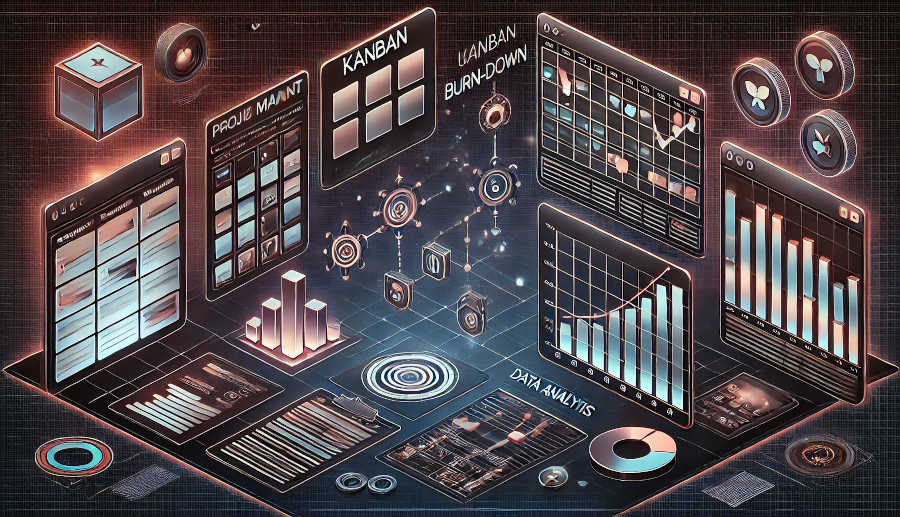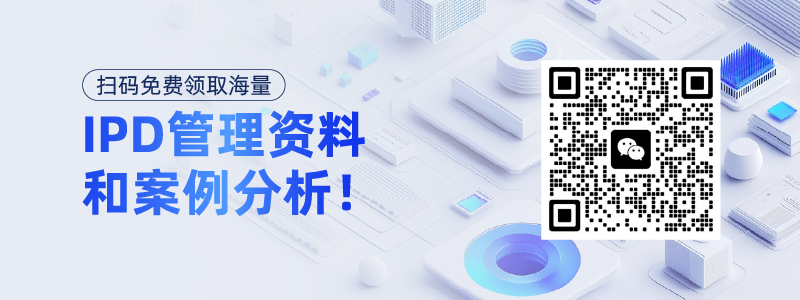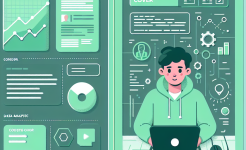Understanding User Needs
At the heart of any successful product is a deep understanding of user needs. Rapid prototyping in Agile sprints provides a unique opportunity to gain insights directly from users. By creating early, low-fidelity prototypes, teams can engage with users in a more hands-on way. This interaction helps in uncovering pain points, desires, and expectations that might not be apparent through traditional requirements gathering methods. For example, a team developing a new mobile banking application might create a simple clickable prototype of the main navigation and key transaction screens. Through user testing of this prototype, they could discover that users are confused about the process of transferring funds and require more visual cues. This feedback can then be used to refine the design before investing significant time and resources into full development.
Moreover, understanding user needs through rapid prototyping allows teams to prioritize features effectively. By presenting different prototypes with varying feature sets to users, teams can gauge which features are most valuable. This ensures that the development effort during sprints is focused on delivering the features that matter most to the end-users. It also helps in setting realistic goals for each sprint, as the team has a better understanding of what can be achieved based on user expectations.
In addition, this process of engaging with users through prototypes builds a sense of empathy within the team. Developers, designers, and other stakeholders get to see firsthand how users interact with the product, which can lead to more user-centric design decisions. This empathy-driven approach can result in products that not only meet user needs but also exceed their expectations, leading to higher user satisfaction and adoption rates.
Storyboarding for Conceptualization
Storyboarding is a crucial skill in rapid prototyping during Agile sprints. It involves creating a visual sequence of the user experience, similar to a comic strip. This technique helps in conceptualizing how a product will flow and how users will interact with it at different stages. For instance, when developing a new e-commerce platform, a storyboard can depict the journey of a user from browsing products to adding items to the cart, proceeding to checkout, and finally receiving confirmation. By mapping out this sequence, the team can identify potential bottlenecks or areas of confusion in the user flow.
Storyboarding also serves as a communication tool within the team. It allows designers, developers, and product owners to share and discuss ideas in a more visual and accessible way. Instead of relying on complex written descriptions, a storyboard can quickly convey the overall concept and vision of the product. This shared understanding helps in aligning the team's efforts during the sprint, ensuring that everyone is working towards the same goals.
Furthermore, storyboards can be used to test different concepts with stakeholders and users. By presenting multiple storyboards that represent different approaches to the product design, teams can gather feedback on which concept is more appealing and intuitive. This feedback can then be used to refine the storyboard and ultimately inform the development of the prototype. Storyboarding, therefore, provides a cost-effective way to explore different ideas and make informed decisions before investing in more detailed development work.
Low-Fidelity Prototyping
Low-fidelity prototyping is a key skill in Agile sprints as it allows teams to quickly create rough versions of the product. These prototypes are often made using simple tools such as paper, sticky notes, or basic digital drawing tools. The focus is on capturing the basic functionality and layout of the product rather than on creating a polished, high-quality design. For example, a team working on a new project management tool might create a paper prototype of the task creation and assignment screens. They can use sticky notes to represent different elements such as tasks, due dates, and assignees, and physically move them around to simulate user interactions.

Low-fidelity prototypes are extremely valuable because they can be created quickly and inexpensively. This allows teams to test multiple ideas and concepts in a short period. They can also be easily modified based on feedback, without the need for significant rework. This iterative nature of low-fidelity prototyping aligns perfectly with the Agile philosophy of continuous improvement.
In addition, low-fidelity prototypes encourage more open and honest feedback. Since they are not polished, users are more likely to focus on the underlying functionality and usability issues rather than being distracted by the visual design. This can lead to more constructive feedback that can be used to improve the product's core features and user experience. Low-fidelity prototyping, thus, provides a fast and effective way to validate ideas and make necessary adjustments during the early stages of the sprint.
High-Fidelity Prototyping
While low-fidelity prototyping is useful for initial exploration, high-fidelity prototyping is essential for more detailed testing and validation. High-fidelity prototypes closely resemble the final product in terms of appearance, functionality, and interactivity. They are often created using advanced prototyping tools that allow for realistic simulations of user interactions. For example, a team developing a new mobile app might use a tool like Adobe XD or Sketch to create a high-fidelity prototype with smooth animations, realistic graphics, and accurate touch interactions.
High-fidelity prototypes are particularly valuable for testing the visual design and overall user experience of the product. They can be used to test how users respond to different color schemes, typography, and layout choices. By presenting a high-fidelity prototype to users, teams can get more accurate feedback on the aesthetic appeal of the product, which can be crucial for user adoption.
Moreover, high-fidelity prototypes can be used to test complex functionality. For instance, if the product involves advanced data visualization or interactive features, a high-fidelity prototype can simulate these features to ensure they work as expected. This helps in identifying any technical or usability issues early in the development process, reducing the risk of costly rework later on. High-fidelity prototyping, therefore, plays a vital role in ensuring that the final product meets the highest standards of quality and user experience.
Iterative Refinement
Iterative refinement is the cornerstone of both Agile development and rapid prototyping. In the context of Agile sprints, it involves continuously improving the prototype based on feedback received from users, stakeholders, and team members. After each round of testing, the team analyzes the feedback and identifies areas for improvement. They then make the necessary changes to the prototype and repeat the testing process. For example, if a user reports that a particular button on the prototype is difficult to click, the team can adjust the size and placement of the button in the next iteration.
Iterative refinement ensures that the product evolves in a way that meets the changing needs of the users. It also helps in building a better understanding of the product requirements over time. As the team makes changes to the prototype, they gain more insights into what works and what doesn't, which can lead to more accurate requirements gathering and prioritization.
Furthermore, iterative refinement promotes collaboration within the team. Designers, developers, and other stakeholders work together to analyze the feedback and come up with solutions. This collaborative approach not only improves the quality of the product but also strengthens the team's working relationships. By continuously iterating on the prototype during the sprint, the team can deliver a product that is of high quality and meets the expectations of the users.
In conclusion, these five rapid prototyping skills - understanding user needs, storyboarding for conceptualization, low-fidelity prototyping, high-fidelity prototyping, and iterative refinement - are essential for successful Agile sprints. They enable teams to quickly test ideas, gather feedback, and iterate on designs, ultimately leading to the development of high-quality products that meet the needs of the users. By mastering these skills, teams can enhance their productivity, collaboration, and the overall effectiveness of the Agile development process. Understanding user needs provides the foundation for creating relevant and user-centric products. Storyboarding helps in visualizing and communicating the product concept. Low-fidelity prototyping allows for quick exploration of ideas, while high-fidelity prototyping enables detailed testing of the design and functionality. Iterative refinement ensures continuous improvement and the delivery of a product that exceeds user expectations. Incorporating these skills into Agile sprints can significantly improve the chances of project success in today's fast-paced and competitive business environment.
ARTICLE TITLE :5 rapid prototyping skills in Agile Sprints ,AUTHOR :ITpmlib

















